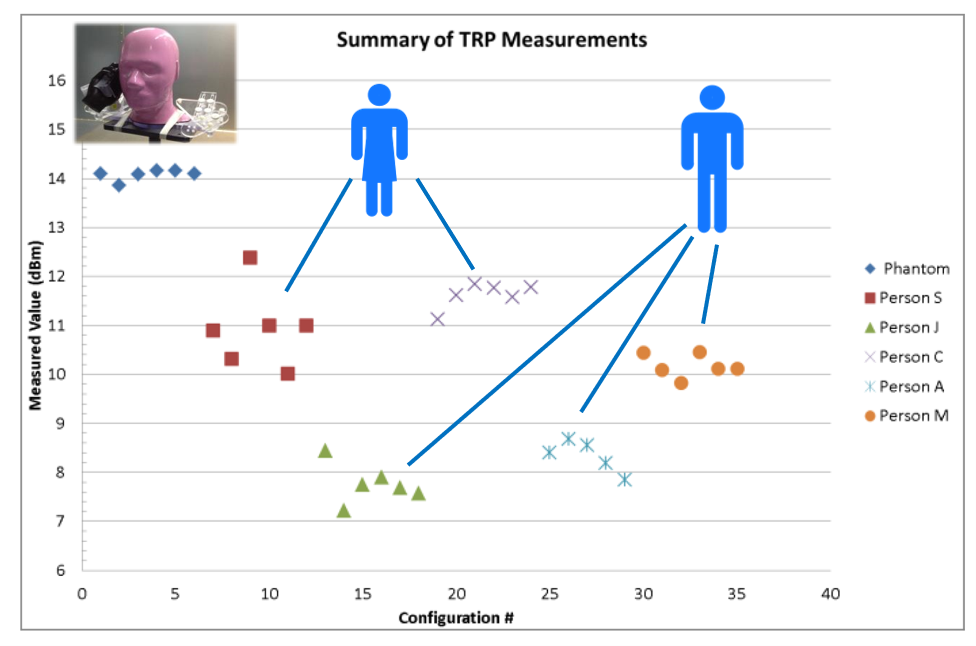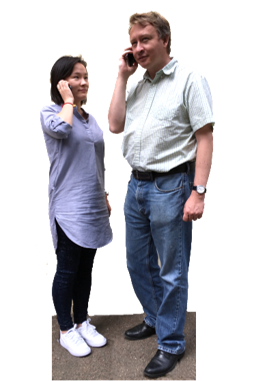Live Person Measurements
Body phantoms, such as head and hand phantoms, have for a long time been used to simulate the human body, and to evaluate how it affects device performance. The human body absorbs RF energy, but it can also de-tune the device antenna, hence significantly changing the RF performance compared with free-space measurements.
The phantoms have many advantages such as standardized properties and repeatability, making it possible to compare measurements from different systems and locations. But they also have a large disadvantage – they don’t have the variations and randomness that a real person introduce. Real humans differ in size and handle the device in different ways. This can lead to unexpected and unwanted device behavior that can’t be discovered when using phantoms. Phones, gaming consols, body worn antennas, and connected MedTech devices are just some examples of devices that can be improved and become more robust by performing live person measurements. The larger Bluetest chambers, primarily the RTS95, are very well suited to evaluate the robustness of a device with regards to variations in the way different humans affect performance. The person can either be located in a chair on the turntable, or walk around in the test space of the chamber, hence acting as a mode stirrer. Both transmit power (TRP) and receiver sensitivity (TIS) can be measured, with TRP measurement times typically in the minute range.


The figure above shows TRP (Total Radiated Power) measurements on a mobile phone in “call mode” with a head/hand phantom and five different persons. The measurement was repeated 6 times for each person. Person 1 repositioned the phone between each measurement while the measurements for person 2-5 were run back-to-back, with the test person holding the phone the same way for all 6 measurements. The variation is as expected larger for the humans than for the phantom, but the measurements are still very repetitive and with a clear person-to-person difference. The difference is in this case well correlated with the size of the person.